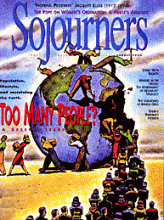In 1974, my family moved from Great Falls, Montana, to Visalia, California. All moves are difficult, but this one—falling between sixth and seventh grades—was particularly hard. Even more profound than a change in physical geography was the new social layout.
My Montana classmates were children, existing in the twilight of 12-year-olds. I and other girls in Mrs. Hewitt’s room did notice "the boys," but playground games were still self-segregated by sex. On our half of the blacktop, jump rope, four square, and tag reigned. On the far side, sequestered boys played much the same inventory, minus jump rope, and when possible, a clandestine game of British Bulldog.
However, in California adolescence had dawned fully without me. Truth be told, the sun was high in the sky—couples "goin’ steady," holding hands at the bus stop, and eyeing pinky friendship rings with a diamond chip at Woolworth’s—$12.99.
OUR TEEN years never quite leave us: The alchemy of awkwardness, exhilaration, self-absorption, and social longing is acid-etched with precision. I revisit these times often now, as my oldest daughter approaches this leg of her journey. Knowing the young adults in our circle mostly inspires me. From our reliable and yet vulnerable baby-sitters (boys and girls) to the earnest, sincere, and too-much-bass neighborhood garage band, these people are now part of my ever-widening adult community.
Read the Full Article
